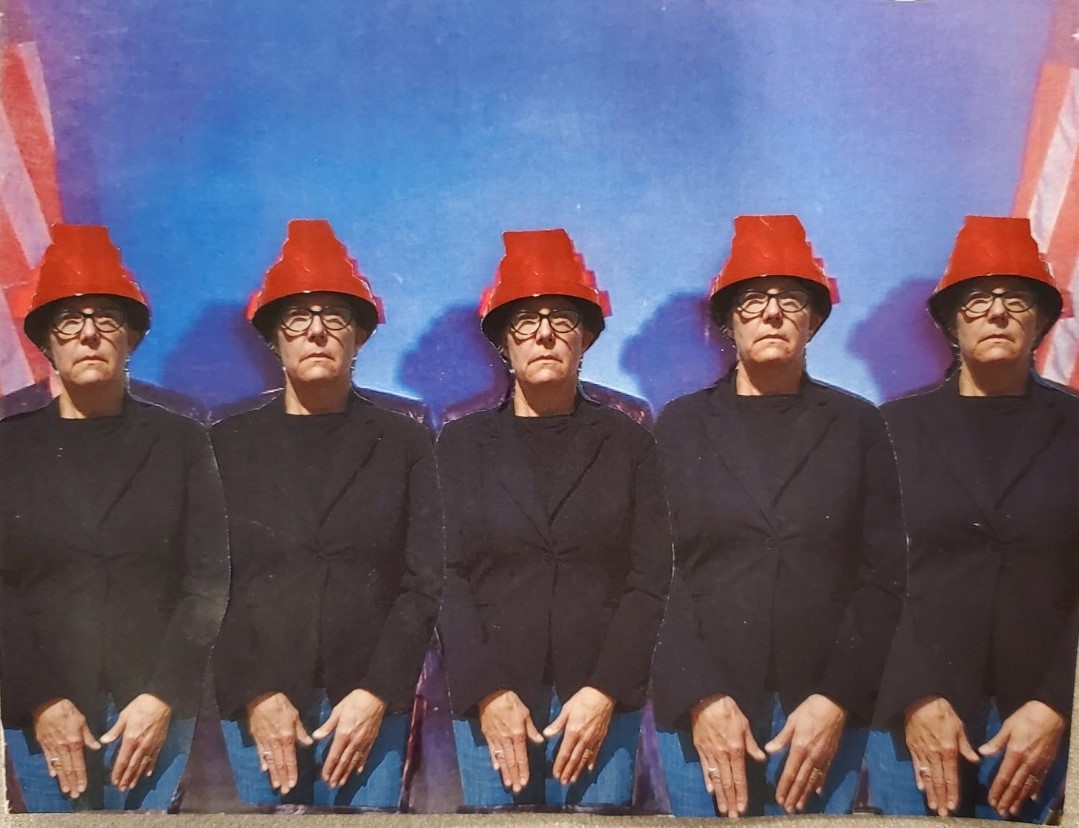
Empty Orchestra
Are you feeling it yet, the empty orchestra vibe?
I have been filling my time on this temporarily deserted stage with reading and yard work. And it seems I am better at both now, it’s simply easier to focus on and appreciate the details. Here are some books I’ve enjoyed recently –and if you need some gardening tips, give me a holler.
Before the first chapter kicked in, I snagged a perfect line from A Tale for the Time Being by Ruth Ozeki. The line was from a poem written by Dogen Zenji and Ozeki prefaced Part One of the book with it. The final line of the poem reads, “for the time being, the entire earth and the boundless sky”. It caught me. It is a spot-on reminder that for all the current tedium brought about by the shelter in place order there remains the entire earth and sky at our fingertips.
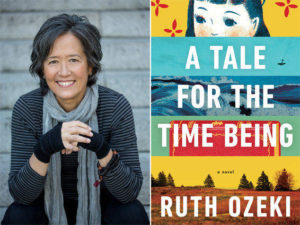
A Tale for the Time Being is a story of two women, Nao, a 16-year-old Japanese girl, who never makes an appearance in the flesh and Ruth, an author living on a small Canadian island off the coast of British Columbia. The reader encounters Nao only through her diary entries, which Ruth found washed ashore on her island. For reference, the story takes place not long after the 2011 Japanese earthquake and tsunami.
Nao’s diary is written for the person who finds the diary and Ruth feels an immediate connection. Ruth is at a creative standstill with her current project and Nao’s words are a welcome distraction. Ruth reads Nao’s diary in real time and in the spaces between those days, we learn about Ruth’s life. As quiet and isolated as Ruth’s life is on the drippy green island, Nao’s is awful as a result of excessive bullying directed at her in school and her hapless father’s multiple suicide attempts. As the bullying intensifies and family disorder settles in, Nao also begins to consider suicide but takes the summer to spend time with her 104-year-old great-grandmother, a radical Buddhist nun.
There is so much to unpack from this story. There are metaphors about time, insights on Asian pop culture, recitations of Buddhist practices, and intimate details of World War II kamikaze training. On and on. For instance, I learned the word karaoke translates to “empty orchestra” and from a Buddhist perspective, humans are discussed as time beings. Yet for all the detail and background information, Ozeki is able to tell a fresh story about the intertwined lives of two women who never meet. 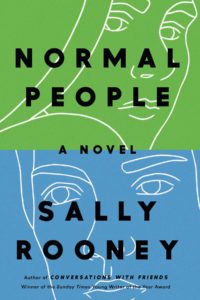
Normal People is Sally Rooney’s second novel. Sally Rooney gets a lot of hype and she deserves it. When it was released, Normal People landed directly into the bouncy house of high praise. Still not yet 30 years old, Rooney has been called “the first great millennial novelist” and “the new Salinger”. I’m not smart enough to weigh in on this, but I did enjoy Normal People from start to finish. I read it as if it was a perfectly executed murder mystery story, which it is not.
Normal people is more-or-less a love story centered on two characters, Connell and Marianne. The story begins when both are attending the same small rural Irish high school. Marianne comes from an odd but well-to-do family, Connell lives with his mother, who cleans Marianne’s family house. In high school Connell is popular and bright. Marianne is an outcast, she is bullied and mocked daily. She too is exceptionally bright.
Read this book, it’s a page turner and it’s good to know what reading Ms. Rooney is all about. The BBC also adapted the novel and it is showing on Hulu.
In addition to Ozeki’s and Rooney’s books I also recently finished reading three memoirs, all wildly different from one another and each well worth your reading time.
Late Migrations: A Natural History of Love and Loss by Margaret Renkl. Renkl is a contributor to The New York Times. Renkl’s published essays are often about her fascination with the natural world, which she refers to as “backyard nature”.
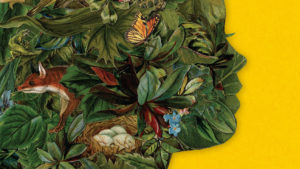
In Late Migrations Renkl weaves short autobiographical essays in-between her short observational nature essays. As Renkl writes her life story, her family’s story, and the backyard nature she observes, all her insights beautifully intertwine.
This slim book has another plus, it is handsomely illustrated by Renkl’s brother, Billy Renkl. And you know me, I am a sucker for a book with pictures.
After long Silence by Helen Fremont.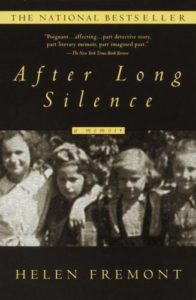
In the early 1990s Helen Fremont received a phone call from her older sister, Lara, who had big news to share. Their parents were not Catholic as the two sisters had always been told. Their parents were Jewish.
This is the story then, about how Helen grew up in the United States as an upper-middle class Catholic daughter of immigrant parents all the while believing her parents had survived the horrors of World War II in Europe, as persecuted Catholics.
Motivated to find truth the sisters researched and contacted survivors who knew about the fates of their family members. The stories are devastating, so much so that I couldn’t read parts of certain chapters. The damage continued as Helen’s parents decided to hide the truth from their daughters and their community. This memoir addresses both the long choke-hold war keeps on its survivors and the ruinous effects of keeping essential truths secret within families.
After Long Silence was published in 1999. After the release Fremont’s mother refused to speak to her and her father disowned her in his will, adding in a codicil that Fremont was predeceased. I learned about After Long Silence from reading about Fremont’s new follow-on memoir, The Escape Artist. That one is on my list.
Good Talk by Mira Jacob is much lighter in execution than the other two memoirs I covered here, but Jacob’s work still tackles tough questions about race and family in graphic novel form. The book opens with Jacob’s young son asking innocent but heartbreaking questions like, “Is it bad to be brown?” It is after all 2016 and the United States has just elected a racist president. Jacob’s son has a good reason to pose the question.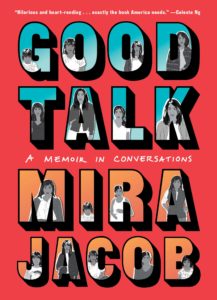
Jacob’s son’s questions lead Jacob to recall her own childhood through conversations with her immigrant parents and extended family in India. (Jacob was designated as ‘too dark’ early on and urged to lower her expectations for happiness and success). She also reveals tough conversations with her in-laws, who are Trump supporters.
I loved this book. There is all kinds of really good talk throughout it!!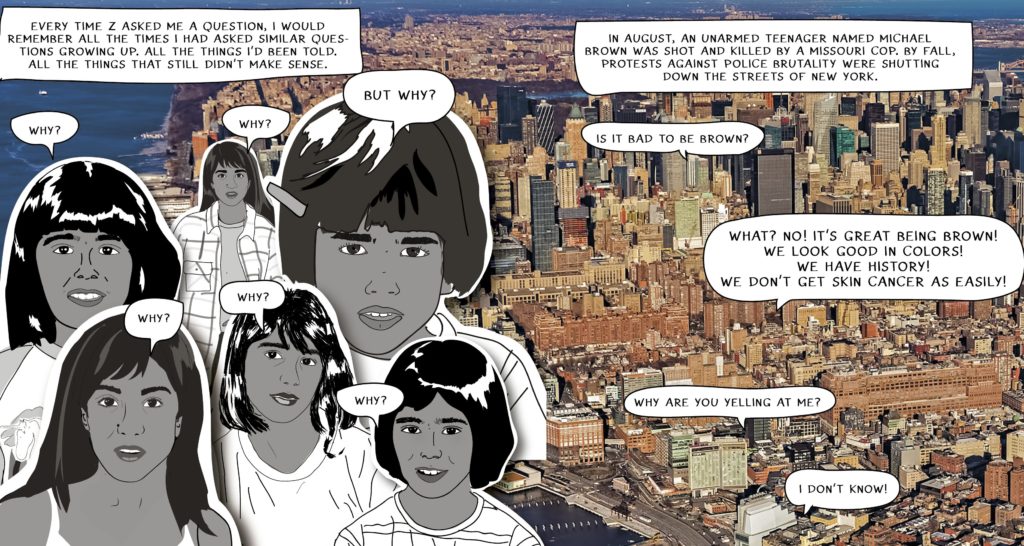


2 Comments
Lori Phillips
This is a cool site! Who is the Devious Devo woman?
Rocky
The model here is an artist living in Salem, Oregon. This self-portrait was taken after completing spring planting. Her garden is her largest canvas.